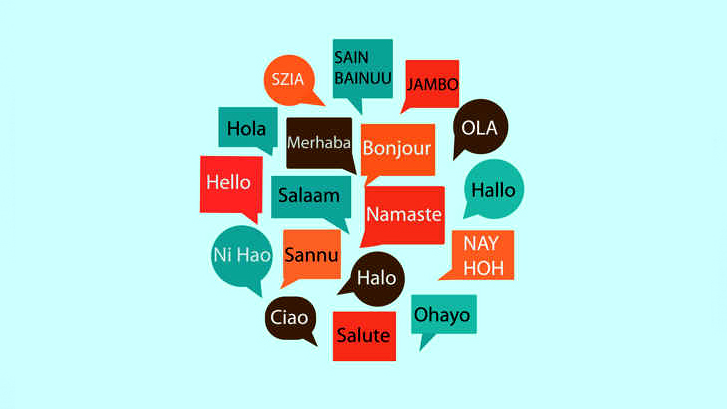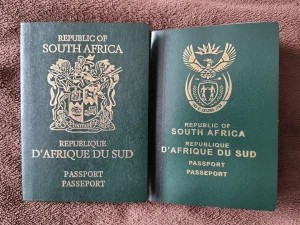
Asia is a continent known for its rich cultural diversity and vibrant linguistic landscape. With over 4.7 billion people residing in Asia, it’s no surprise that there are thousands of languages spoken across the region. In this comprehensive guide, we will explore the top 10 most spoken languages in Asia, shedding light on their origins, unique features, and the countries where they are predominantly spoken. Whether you’re a language enthusiast, a traveller, or simply curious about the linguistic tapestry of Asia, this article will provide you with valuable insights and a deeper appreciation for the diverse languages of the continent.
Which language is predominantly spoken in Asia?
Asia is incredibly diverse, and there’s no single language “predominantly” spoken across the entire continent. However, the language with the most native speakers in Asia is Mandarin Chinese, with roughly 1.2 billion speakers. This represents about 30% of the total population of Asia.
Is Asia a country?
No, Asia is not a country. It’s actually the largest and most populous continent on Earth, covering about 30% of the world’s total land area and encompassing 49 different countries. These countries have diverse cultures, languages, and governments.
It’s easy to see why you might have thought Asia was a country, considering its vast size and rich history. However, it’s important to remember that continents are geographical regions, not political entities.
Top 10 Most Spoken Languages in Asia
1. Mandarin Chinese: Bridging East and West
With a staggering 1.2 billion speakers, Mandarin Chinese claims the top spot as the most spoken language in Asia and the world. As the official language of China and Taiwan, Mandarin has a significant influence on global commerce, culture, and diplomacy. Its complex writing system, consisting of over 50,000 characters, poses a challenge for learners, but mastering Mandarin opens doors to a vast population and a wide range of professional opportunities. The language is tonal, meaning that the pitch and intonation of a word can change its meaning, adding a layer of complexity.
Mandarin Chinese is not only spoken in China and Taiwan but also in Chinese communities worldwide. Due to globalization, learning Mandarin has become increasingly valuable for international business and cultural exchange. If you’re interested in learning Mandarin, various resources, such as language learning apps, online courses, and immersive language programs, can help you embark on your language journey.
2. Hindi: The Melodious Language of India
Hindi, with approximately 550 million speakers, holds the second position in our list of the most spoken languages in Asia. As the official language of India, Hindi is predominantly spoken in the northern states of Bihar, Delhi, Haryana, Jharkhand, Madhya Pradesh, Rajasthan, Uttarakhand, and Uttar Pradesh. Outside of India, significant Hindi-speaking communities can be found in countries like Nepal, Mauritius, Fiji, and South Africa.
The Hindi alphabet consists of letters that have distinct sounds, making pronunciation straightforward. Many commonly used English words, such as yoga, nirvana, and khaki, have their origins in Hindi. Hindi Day, celebrated on September 14th, commemorates the adoption of Hindi as an official language of India. If you’re eager to learn Hindi, numerous language-learning apps and online resources are available to help you get started on your language-learning journey.
3. Indonesian: The Lingua Franca of Southeast Asia
With more than 260 million speakers, Indonesian occupies the third spot on our list. Although it’s the official language of Indonesia, it’s important to note that the country is incredibly linguistically diverse, with over 700 dialects spoken across its numerous islands. Indonesian, also known as Bahasa Indonesia, serves as the lingua franca, or common language, enabling communication among the diverse ethnic groups in the country.
Indonesian is widely spoken beyond the borders of Indonesia, particularly in neighbouring countries such as Malaysia, Singapore, Brunei, the Philippines, and Australia. Its status as a critical need language in the United States highlights its importance in economic and diplomatic contexts. If you’re interested in learning Indonesian, you can explore language-learning apps and online courses designed to help you gain proficiency in this vibrant language.
4. Russian: Connecting Europe and Asia
Russian, spoken by over 260 million people, is the fourth most spoken language in Asia. While it’s the official language of Russia, Belarus, Kyrgyzstan, and Kazakhstan, Russian is also commonly spoken in neighbouring countries, including Ukraine, Georgia, and Azerbaijan. As the most spoken language in Europe, Russian plays a vital role in bridging the gap between Europe and Asia.
Learning Russian can be a valuable asset, opening doors to cultural, economic, and diplomatic opportunities. Russian literature, with renowned works like War and Peace and Anna Karenina, has made a significant impact on the world’s literary heritage. If you’re interested in embarking on a journey to learn Russian, a variety of language-learning resources, from apps to online courses, can guide you along the way.
5. Arabic: The Language of the Middle East and North Africa
Arabic, spoken by approximately 230 million people, is the fifth most spoken language in Asia. It serves as the official language in over 20 countries, including Saudi Arabia, Morocco, Egypt, and Lebanon. Arabic encompasses various dialects due to its geographical expanse, with Modern Standard Arabic serving as a bridge language understood by most Arabic speakers.
Arabic is known for its unique script, written from right to left, and its intricate cursive handwriting. While it may be considered a challenging language for English speakers to learn, the rewards are immense. Arabic has a rich literary tradition and is the language of the Quran, making it a sacred language for Muslims worldwide. If you’re intrigued by the beauty and complexity of Arabic, there are numerous resources available to help you embark on your language-learning journey.
6. Bengali: The Sweet Language of Bengal
Bengali, spoken by approximately 230 million people, holds the sixth position on our list. It is the official language of Bangladesh and is predominantly spoken in the northern states of India. Bengali holds great cultural significance, as the national anthem of India was originally composed in this melodious language. UNESCO celebrates International Mother Language Day on February 21st to honour the language movement in Bangladesh.
Bengali is considered one of the sweetest languages in the world, characterized by its simplified pronunciation and expressive emotional expressions. Unlike many other languages, Bengali does not have grammatical genders, making it relatively easier for English speakers to grasp. If you’re interested in learning Bengali, various language-learning apps and online resources can guide you on your language-learning journey.
7. Persian: The Language of Poetry and Beauty
Persian, also known as Farsi, is spoken by approximately 130 million people and holds the seventh position on our list. It is the official language of Iran, Afghanistan, and Tajikistan. Persian has a rich history, with Iran being referred to as Persia until 1935. The language has had a significant influence on literature, particularly in the realm of poetry, with renowned poets like Rumi and Hafez.
Persian shares historical ties with France, leading to the adoption of numerous French loanwords in the language. If you’re captivated by the beauty of Persian, there are various resources available, from language learning apps to online courses, that can help you explore this poetic language.
8. Japanese: The Language of Tradition and Innovation
Japanese, spoken by approximately 120 million people, claims the eighth position on our list. While it’s not recognized as the official language of Japan, Japanese holds a special place in the hearts of its speakers. The language evolved over centuries and has a unique writing system consisting of three different scripts: Hiragana, Katakana, and Kanji.
Japanese is known for its politeness and intricate levels of formality. It has influenced various aspects of global culture, from cuisine to entertainment, with anime and manga gaining popularity worldwide. If you’re interested in delving into the fascinating world of Japanese, there are numerous resources available to help you learn the language, including language learning apps, online courses, and immersion programs.
9. Punjabi: The Language of Vibrancy and Tradition
Punjabi, spoken by approximately 100 million people, occupies the ninth spot on our list. It is one of the 22 scheduled languages of India, meaning that the Indian government recognizes its importance and ensures its protection and development. Punjabi is the most widely spoken language in Pakistan, although it is not recognized as an official language there, as English and Urdu hold that distinction.
Punjabi has a significant presence in the diaspora, with sizable communities in the United Kingdom and Canada. It is one of the few languages that can be written in multiple scripts, including Shahmukhi and Gurmukhi. If you’re captivated by the vibrancy and traditions associated with Punjabi, various resources can assist you in learning this culturally rich language.
10. Marathi: The Language of Maharashtra
Marathi, spoken by approximately 99 million people, claims the tenth spot on our list. It is the official language of the Indian states of Maharashtra and Goa. Marathi has a rich literary tradition, with notable works by authors like Vishnu Sakharam Khandekar and Pu La Deshpande. It is one of the 22 scheduled languages of India, signifying its cultural significance and preservation.
Marathi is primarily spoken in India, but it also has a presence in diaspora communities. If you’re interested in learning Marathi, various resources are available, including language learning apps and online courses that cater to learners of all levels.
Conclusion
The linguistic diversity of Asia is truly remarkable, with each language reflecting the rich cultural tapestry of the continent. From Mandarin Chinese to Marathi, these top 10 most spoken languages in Asia capture the essence of the region’s heritage, traditions, and global influence. Whether you’re interested in business, travel, or cultural exchange, learning one of these languages can open doors to new opportunities and deepen your understanding of Asia’s vibrant communities.
Embarking on a journey to learn any of these languages may seem daunting, but with the abundance of language learning resources available today, it has never been more accessible. From language learning apps and online courses to immersion programs and language exchange platforms, there are various avenues to explore. So, take the first step, embrace the linguistic diversity of Asia, and embark on a language-learning adventure that will connect you to millions of people and cultures across the continent.
Remember, language learning is not just about acquiring new skills; it’s about fostering connections, bridging gaps, and celebrating the beauty of human expression. So, dive into the world of language learning and discover the wonders of Asia’s most spoken languages.





